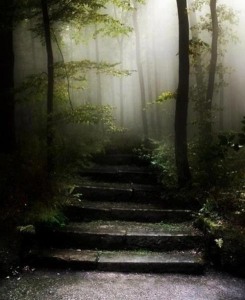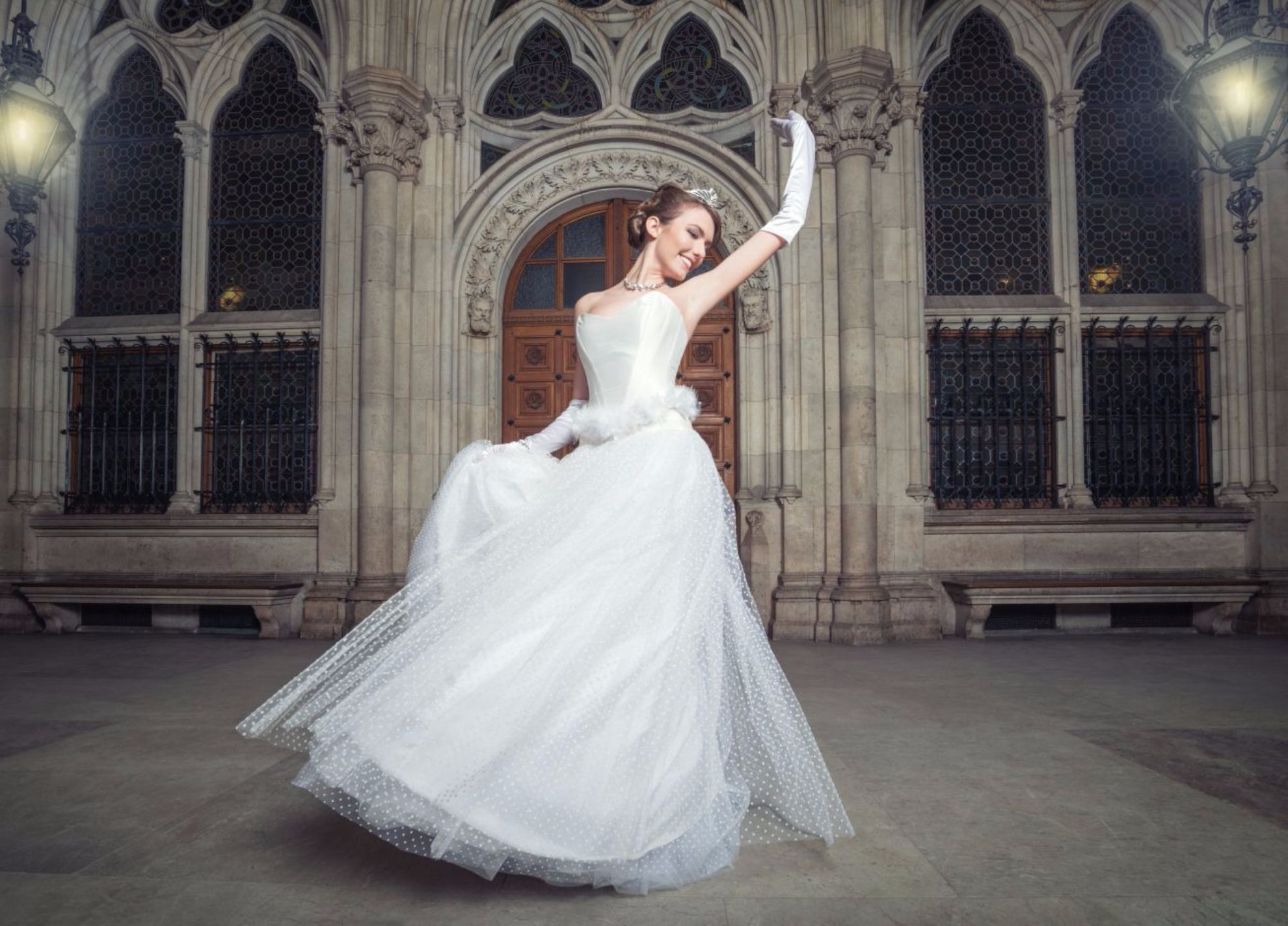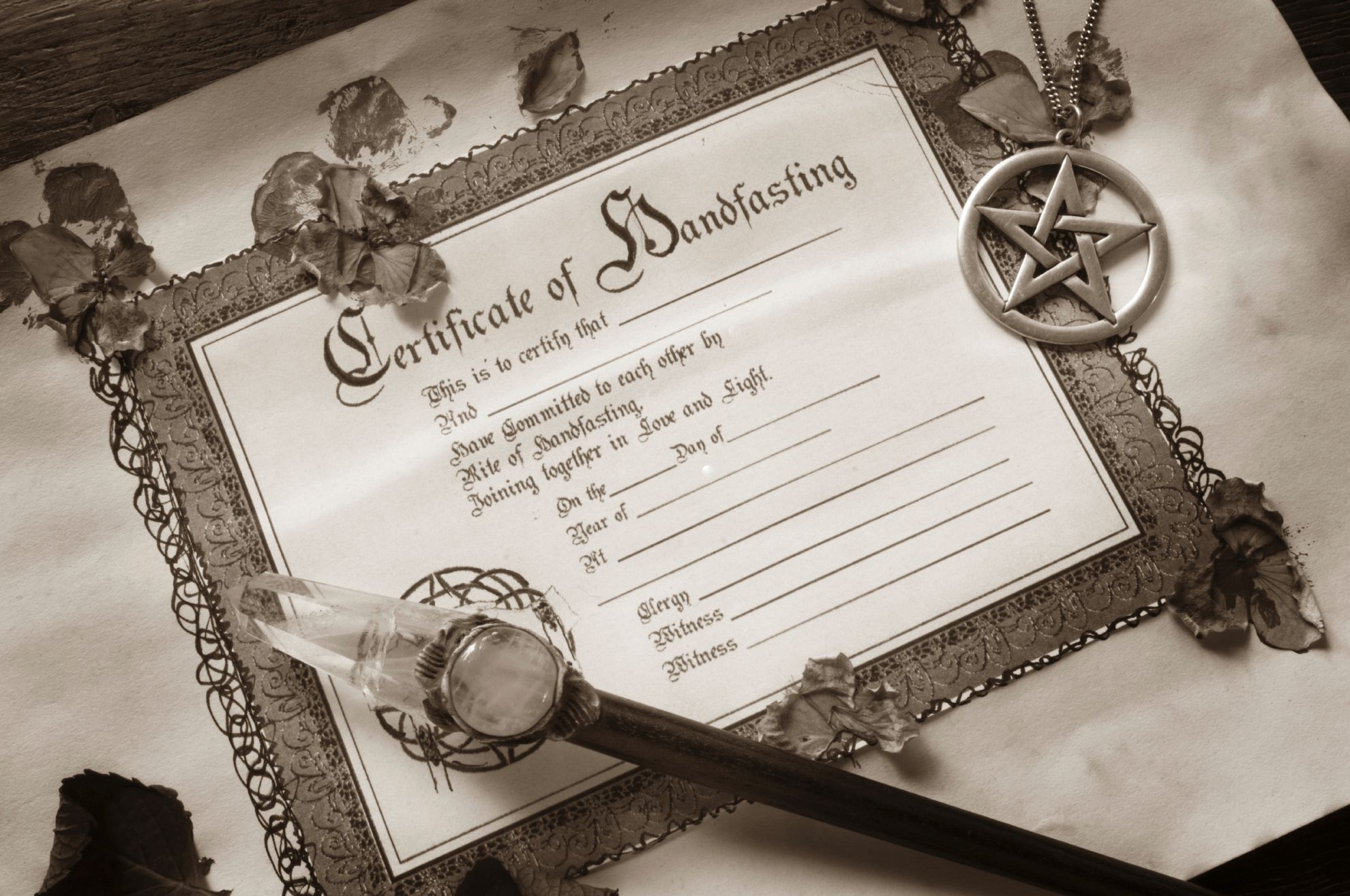Celebrations
All my couples will receive the following for their chosen ceremony
- Unlimited contact via Email, phone or sms
- Obligation free ‘meet and greet’ appointment
- Appointments to complete legal paperwork and plan your ceremony
- A rehearsal in the week prior to your ceremony if requested
- PA System with microphone & music capabilities
- Table and chairs for certificate signing
- A presentation certificate completed by a professional calligrapher
- A decorative pen for certificate signing
Naming Ceremony
A naming ceremony is a celebration of welcoming a new member of the family. It is often celebrated for babies or young children, although it can be a celebration for any age group. The occasion celebrates the emotional and spiritual commitment that godparents or guardians will make to assist the parents in nurturing and raising the child. The parents will then make a promise to love, protect and guide the child into adulthood.
A Wiccaning in the simplest of descriptions is an initiation ritual. Initiation is an integral part of every society and every religion, and is defined as what an individual must experience in order to become a member of that religion. Many believe that a Wiccaning is the equivalent of Baptism or Naming Day which are common rituals in today’s society to welcome a new baby. Wiccaning ceremonies can be celebrated at any age child or adult.
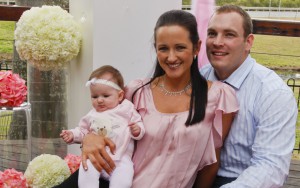
Commitment Ceremonies
A commitment ceremony is similar to celebrating a wedding. Commitment ceremonies are available for those couples who wish to celebrate their commitment to each other, although do not wish to be legally married.
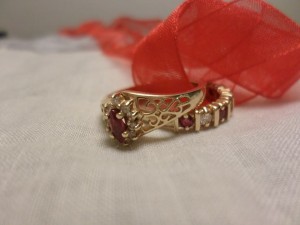
Renewal of Vows Ceremonies
Considering renewing your wedding vows? Congratulations! A vow renewal ceremony is a beautiful way of celebrating a special wedding anniversary. A couple renewing their commitment to each other, after many years of marriage, is a truly beautiful celebration of two people in love. Renewal of vows ceremonies are often celebrated for couples who are celebrating a significant wedding anniversary such as their 10th, 20th, 30th or 40th year of marriage. The couple will renew the vows they made on their wedding day and be able to celebrate again with family and friends, often with their children and grandchildren present. A renewal of vows ceremony can be organised as a specific celebration or as part of a party, and will be personalised to your individual requirements. All couples who renew their vows will receive a beautiful certificate to celebrate the occasion.
Across time, all cultures have understood that without the clear marker of initiation into manhood on the journey of life, young males often have a difficult time making the transition into adulthood, therefore it was understood that these rituals were one of the community’s most important ritualistic celebrations. Whilst the coming of age ceremony of many ancient cultures may appear particularly gruesome by today’s standards of initiation into adulthood, these cultures for prehistoric times onwards, created these rites of passage for a specific reason, to initiate boys into manhood. Today these ritualistic ceremonies are almost extinct, and young boys have no clear mark on their journey towards becoming a man. Today you may see this phase as being when a young man graduates college and gets a desired job, or when they are married and have a child. The issue with this in today’s society that these markers of adulthood occur latter and later into life especially in regards to marriage and children. So with these traditional rites of passage being left behind, and our modern markers of adulthood being delayed until later in life, many young men are left feeling stuck somewhere between boyhood and manhood.
In the western world there are very few male initiation rituals in modern times. The most common coming of age ritual that occurs in Australia for young men is the 21st birthday celebration, with the excessive alcohol consumption being the worst thing the initiate experiences; which is by today’s standards a pretty tame way of marking the passage into adulthood, in comparison to the ritualistic practices of scaring of the body, land jumping or circumcision of ancient cultures. With all this being said, the process of entering into adulthood and becoming a man does not occur within a single moment. These ritualistic rites of passage into adulthood are an important celebration to let the young man know that the community will begin to think of him as a man and that he should start to behave as one, learning to deal with the responsibilities of adulthood.
While modern rites of passage such as a Confirmation or Bah Mitzvah often signifies of a young man entering into adulthood. Males who are not part of these belief systems can be helped along by the fathers and father figures within the family and community, where the young man is celebrated and welcomed into the community as an adult. But it should not mean that you need to be of a religious faith to celebrate a transition into manhood. It is important that from an early age that men are showing their sons the importance of the role of a man in their culture or religion, and this can then be a lead up to the important celebration of the coming of age ritual. Creating a unique ceremony for this special occasion is only going to give the occasion more importance. For others a father and son road trip or camping trip to celebrate a young man’s entrance into adulthood is another form of marking this important occasion. Whatever way is chosen to mark this occasion, it is defiantly one that needs to re-introduced into modern times, to assist the young males of the coven or wiccan community to transition themselves into adulthood, as this is an area where our culture does not do well at. An effective coming of age should begin early in life where children are shown how to act as adults and the responsibilities and privileges that will be bestowed upon them at their coming of age ritual. a young male who has learned that responsibility comes with entering into manhood is likely to accept these responsibilities when they are given to him. In the past Pagan cultures were very good at making the coming of age rituals an important celebration, therefore in today’s society, we need to bring these ceremonies back into existence, to aid our sons in the transition into manhood.
For female children traditionally the Coming of Age Ritual occurred at following their first menstruation, and was a celebration of life. In the past this ritual was an important step on the road to adulthood, where in the present day many cultures do not signify the relevance of this stage of life, and period of transformation from child to adult.
It is now a stage of life that is not discussed and hidden away, often leaving young girls confused and with a feeling of shame. The “curse” as it was named in more modern times, was something that was seen as simply that – a curse that all young women would encounter. In the present day when a young girl becomes a teenager they may have bestowed upon them more responsibility around the household, attending to more chores and caring for younger siblings whilst the parents are away from the home for short periods. In some cultures they celebrate this stage of life between the ages of 13 and 16 with celebrations such as Bat Mitzva for Jewish girls, Quinceanera for Spanish girls and Sweet 16 parties for girls who are not of any specific faith. These celebrations signify the entrance into adulthood and the time when a young girl will encounter increased responsibility. They may be able to get their first paid employment and learn to drive a car. Here in the south, especially within Australian culture of the present day, this tradition is lost completely. There is no celebration specific with this stage of life. Young girls begin their Secondary schooling at the age of 13 and this is when they are considered a teenager and gain more responsibility. It is not until the age of 18 that they are considered an adult. It is a great shame because young girls need this forgotten celebration as a reason to feel special, especially at a time when they are dealing with the stressors of peer pressure, body image and developing an identity for themselves.
It is important to redevelop the traditions and utilise the essence of the old rituals, and adapt them to suit today’s society. These rituals then can be adjusted to suit the development, personality and specific needs of the young woman. We are now beginning to realise the importance of this ritual, and the need for them to re-introduced into today’s society. There is a hope, especially with regards to girls’ coming of age rites, that we can give onto our young women the knowledge of the past, as well as the belief of themselves as a special, worthy and important part of the Coven or Wiccan family group. If this can be accomplished during the present generation, the ritual purpose may have a chance to be renewed; and with this we give the next generation of young womem a vital foundation on which to build their own decisions regarding their spiritual and personal growth, chosen career for the future, and choices surrounding sexuality, coupling and children; and with this the strength and courage to stand against discrimination if or when they may encounter it.
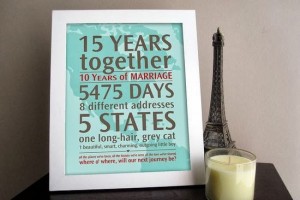
Handfasting Ceremonies
A Handfasting Ceremony is the ritual which is celebrated when a couple wishes to be bonded to a partner in the eyes of the Goddesses and the Gods. This may or may not also be a legal marriage depending on the couple and the country where they reside. Same-sex partnerships may be celebrated just as heterosexual ones are, with a few individuals participating in multiple partnerships though Handfasting, although this is a much less common occurrence in modern times.
Beltane at the beginning of May is traditionally the time for Handfasting Ceremonies to occur . Beltane is the time of the sacred marriage between the Goddess and the God. In a Wiccan Handfasting the bride represents the Goddess and the groom represents the God. The couple are not seen as two individuals coming together, but two halves that go together to make up a whole being. The Wiccan marriage is based upon mutual respect and support, with your partner being more than just your husband or wife but also your best friend, Wiccans may wish to go through a legal marriage ceremony at the same time as their Handfasting to make their union official within their country. But what is important to the couple is that a High Priest or High Priestess performs the Handfasting within a sacred ritual circle, and they are able to celebrate their union with their loved ones and have a special feast.
During a Handfasting Ceremony the couple vow to remain within the partnership for as long as love shall last, after which each is permitted to leave the relationship and go their separate ways. The Ceremony is conducted by the High Priest or Priestess, and usually occurs at Beltane, or at a time when the moon is waxing. Traditionally all those attending the ceremony would be dressed in white or attend skyclad, although today this is not the case. Modern Handfasting ceremonies often follow a Celtic or medieval theme, with period dress worn by the couple as well as all attendees to the ceremony.Today a Handfasting Ceremony can be utilised in many ways, but most often to signify a betrothal or engagement. With the laws of many countries being as they are, Handfasting Ceremonies are a perfect way for same-sex couples to make their commitment known. But most of all a Handfasting ceremony can be added to any form of Wedding Ceremony regardless of the religions of the couple to make the partnership legal within the Pagan community since “tying the knot” is a phrase that universal to most cultures. Those who wish for their Handfasting to be a legal wedding as well as a legal Handfasting will require that their High Priest / High Priestess be certified as a Legal Marriage Celebrant within Australia to perform wedding ceremonies.
Handfasting Ceremonies can also be included as part of a traditional wedding, modern wedding or theme wedding.
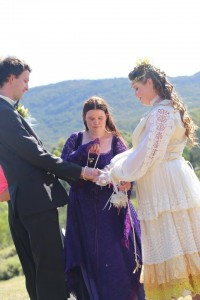
Pet Blessing or Pet Memoral
Our pets are often considered to be important members of our families. They bring us joy, laughter and unconditional love. Pet blessings are a wonderful way to celebrate a new companion animal joining the family. In the same way, a pet memorial is a way to help a grieving family heal following the loss of a much loved family member and companion. Personalised blessings and memorials available upon special request.
Within some religions a divorce is viewed as a negative occurrence since the vows taken at the time of marriage often state ’til death do we part’. In Wiccan tradition this is not the case, since this vow is never given, rather the vow of ‘as long as love shall last’ is used. Therefore the Handparting Ceremony is an end to the relationship without negativity being attached to it. When possible, it is important that both partners are in attendance at the Handparting Ceremony, as this ceremony can bring closure and signify a true ending to marriage or a committed relationship. Just like the ritual of Handfasting, the Handparting ritual also occurs within a ritual circle, and the hands which were once bound are un-bound. This can also signify the severing of the emotional and magickal ties that the couple had to each other. Each person can then leave the circle to go their separate ways, to live a life free to their own wishes. This by all means does not signify that the relationship has been denied, ignored, or forgotten, it just means that each partner is free to go on with their own life. It is also seen as desirable to have the same person who had officiated over the Handfasting ceremony, to officiate over the Handparting Ceremony also.
Beltane at the beginning of May is traditionally the time for Handfasting Ceremonies to occur . Beltane is the time of the sacred marriage between the Goddess and the God. In a Wiccan Handfasting the bride represents the Goddess and the groom represents the God. The couple are not seen as two individuals coming together, but two halves that go together to make up a whole being. The Wiccan marriage is based upon mutual respect and support, with your partner being more than just your husband or wife but also your best friend, Wiccans may wish to go through a legal marriage ceremony at the same time as their Handfasting to make their union official within their country. But what is important to the couple is that a High Priest or High Priestess performs the Handfasting within a sacred ritual circle, and they are able to celebrate their union with their loved ones and have a special feast.
During a Handfasting Ceremony the couple vow to remain within the partnership for as long as love shall last, after which each is permitted to leave the relationship and go their separate ways. The Ceremony is conducted by the High Priest or Priestess, and usually occurs at Beltane, or at a time when the moon is waxing. Traditionally all those attending the ceremony would be dressed in white or attend skyclad, although today this is not the case. Modern Handfasting ceremonies often follow a Celtic or medieval theme, with period dress worn by the couple as well as all attendees to the ceremony.Today a Handfasting Ceremony can be utilised in many ways, but most often to signify a betrothal or engagement. With the laws of many countries being as they are, Handfasting Ceremonies are a perfect way for same-sex couples to make their commitment known. But most of all a Handfasting ceremony can be added to any form of Wedding Ceremony regardless of the religions of the couple to make the partnership legal within the Pagan community since “tying the knot” is a phrase that universal to most cultures. Those who wish for their Handfasting to be a legal wedding as well as a legal Handfasting will require that their High Priest / High Priestess be certified as a Legal Marriage Celebrant within Australia to perform wedding ceremonies.
Handfasting Ceremonies can also be included as part of a traditional wedding, modern wedding or theme wedding.
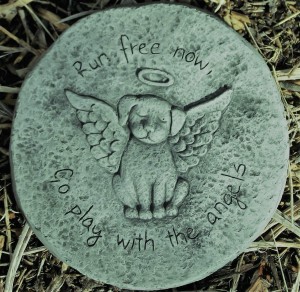
Croning ritual
When our female elders step across the threshold leaving their moontime behind them, they then become the “Keepers of the Knowledge”. In some cultures this would be seen as entering the age of the Crone. No longer is their attention focused upon the creation and rearing of their own family, and they can move on to becoming leaders and mentors within the Wiccan community. They can now focus their attention towards to the children of their friends, their clan or tribe, and be the ones to pass on the ancient knowledge of the Craft. Our relationship with this great circle of life rests in their hands. They must take on this responsibility through teaching and sharing the knowledge they have learnt in everyday life.
The rites of passage for the stage of a woman’s life known as crowning have been lost over many decades. There are many rituals dedicated to the Maiden stage of the journey, yet little documented regarding the life passage of the Crone or Croning rituals. Maybe this is because the typical view of the Crone has been replaced by the “hag” of a more modern time period. It maybe also perceived that the Crone is the transition towards death or because she may be threatening to society due to her vast amount of knowledge, and therefore given little importance as a life stage to be celebrated. Today women are beginning to realise that entering the life stage of the Crone does not mean that one’s life is over. It also does not mark the stage of life where power, beauty and sexuality comes to an end. The time of the Croning is all about the understanding of the transition, and the acceptance that one has reached the threshold of the fulfilment of female life experience and wisdom. Whilst this time of life is often viewed as the most feared and disregarded in today’s society, within the Wiccan community it is a time when a woman can continue to have a relevant role in society, and can even have more of a leadership role within the Coven.
Croning is also known by some as Eldering, and is an important stage in the life journey of any Wiccan. Modern Western society often relegates the older generation to positions of obscurity, where within Wicca the opposite actually occurs. Wiccan tradition is based around consciously honouring and valuing those who have lived and learned before us, and become the most valuable resources for the Coven and wider Wiccan community. The become the wise members of the community and take an active role in leadership, by sharing their knowledge and insight with the younger ones. They are honoured for their accomplishments and achievements more at this stage of life than any other stage previously. The Croning ceremony is often celebrated for those who have been in the coven for a long time, and who have been chosen to become and Elder within the community. Often this ceremony coincides with menopause for women, or at the age of retirement for men. The Croning ceremony is much the same as a Wiccaning ceremony, involving a party to celebrate the individual, and their new place within the community. It may also be seen as a time when the person takes a step back from active leadership within the Coven or Wiccan community, and can take a seat around the council fires and provide support to the new leaders.Wiccan women are rediscovering the old ways and traditions to mark the stages of life. Many are embracing the older Celtic traditions and Pagan religions, immersing themselves in Goddess spirituality, and with this finding a peace and strength they’d thought was lost long ago. Current day Wiccans are creating a new society that is redefining women in terms of intellectuality, wisdom, creativity, and strength rather than the focus on age, hair colour, and body image which is common in today’s society.
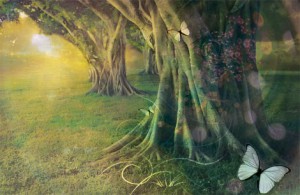
Crossing Over the Bridge Ceremonies
We realise that we begin our life within darkness, enter the light at the peak of maturity, and then we again meet the darkness before we are reborn. Therefore in this way Death is never an end, it is simply a transition between our lives on the earth. Every year at Samhain, we celebrate the life of those we love who have passed on to the Summerlands before us, and continue to honour their memory in eternal life.
The Summerlands is the term commonly used to refer to the realm where the souls of the departed reside, rest and integrate lessons from their life on earth, whilst awaiting their time for reincarnation. The term is traditionally a Celtic term that was utilised as a term to describe the other world where the souls of the departed rested after death. In the Summerlands we are reunited with ancestors and much loved friends who have passed before us, and we have the opportunity to renew our bonds, review our past lives, decide on which lessons we wish to experience and learn from when we are reborn into our next life, and rest in peace with the Blessed Goddess.
It is important for Wiccans to have a “crossing the bridge” ceremony to mark the celebration of their life. These rights are important for the loved ones left behind as it assists them accept the loss, and assists with the mourning process, much in the same was as a funeral for Christians. This rite is used to honour the individual who has passed over to the Summerlands, celebrate their life, and what they meant to their family and friends within the Coven and wider Wiccan community. Today this rite may also be used to honour a Wiccan who is still alive, but is in the process of passing over the bridge. It can provide this person with comfort to know their life will be celebrated and honoured by their loved ones, whilst they are still able to celebrate with them.
In today’s society there is no observed rituals to signify this period of a woman’s life, but within Wiccan traditions the time of menopause was traditionally honoured, and seen as marking the woman’s journey into Cronehood, where the age of sharing wisdom from experience begins. The Crone aspect of the Goddess signifies the keeper of the knowledge, the guardian of the coven’s secrets; and most importantly the significance of death, without which there is no opportunity for re-birth. Depending on the traditions of the Coven, a Croning ritual may occur in different ways, with some holding symbolic funerals for their fertility.
The rites of passage for the stage of a woman’s life known as crowning have been lost over many decades. There are many rituals dedicated to the Maiden stage of the journey, yet little documented regarding the life passage of the Crone or Croning rituals. Maybe this is because the typical view of the Crone has been replaced by the “hag” of a more modern time period. It maybe also perceived that the Crone is the transition towards death or because she may be threatening to society due to her vast amount of knowledge, and therefore given little importance as a life stage to be celebrated. Today women are beginning to realise that entering the life stage of the Crone does not mean that one’s life is over. It also does not mark the stage of life where power, beauty and sexuality comes to an end. The time of the Croning is all about the understanding of the transition, and the acceptance that one has reached the threshold of the fulfilment of female life experience and wisdom. Whilst this time of life is often viewed as the most feared and disregarded in today’s society, within the Wiccan community it is a time when a woman can continue to have a relevant role in society, and can even have more of a leadership role within the Coven.
Croning is also known by some as Eldering, and is an important stage in the life journey of any Wiccan. Modern Western society often relegates the older generation to positions of obscurity, where within Wicca the opposite actually occurs. Wiccan tradition is based around consciously honouring and valuing those who have lived and learned before us, and become the most valuable resources for the Coven and wider Wiccan community. The become the wise members of the community and take an active role in leadership, by sharing their knowledge and insight with the younger ones. They are honoured for their accomplishments and achievements more at this stage of life than any other stage previously. The Croning ceremony is often celebrated for those who have been in the coven for a long time, and who have been chosen to become and Elder within the community. Often this ceremony coincides with menopause for women, or at the age of retirement for men. The Croning ceremony is much the same as a Wiccaning ceremony, involving a party to celebrate the individual, and their new place within the community. It may also be seen as a time when the person takes a step back from active leadership within the Coven or Wiccan community, and can take a seat around the council fires and provide support to the new leaders.Wiccan women are rediscovering the old ways and traditions to mark the stages of life. Many are embracing the older Celtic traditions and Pagan religions, immersing themselves in Goddess spirituality, and with this finding a peace and strength they’d thought was lost long ago. Current day Wiccans are creating a new society that is redefining women in terms of intellectuality, wisdom, creativity, and strength rather than the focus on age, hair colour, and body image which is common in today’s society.
